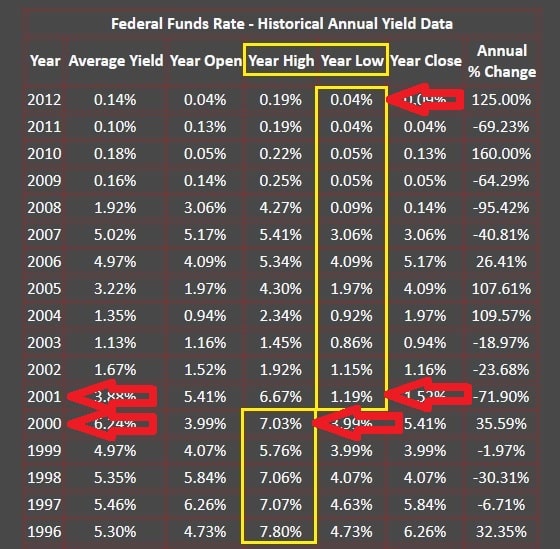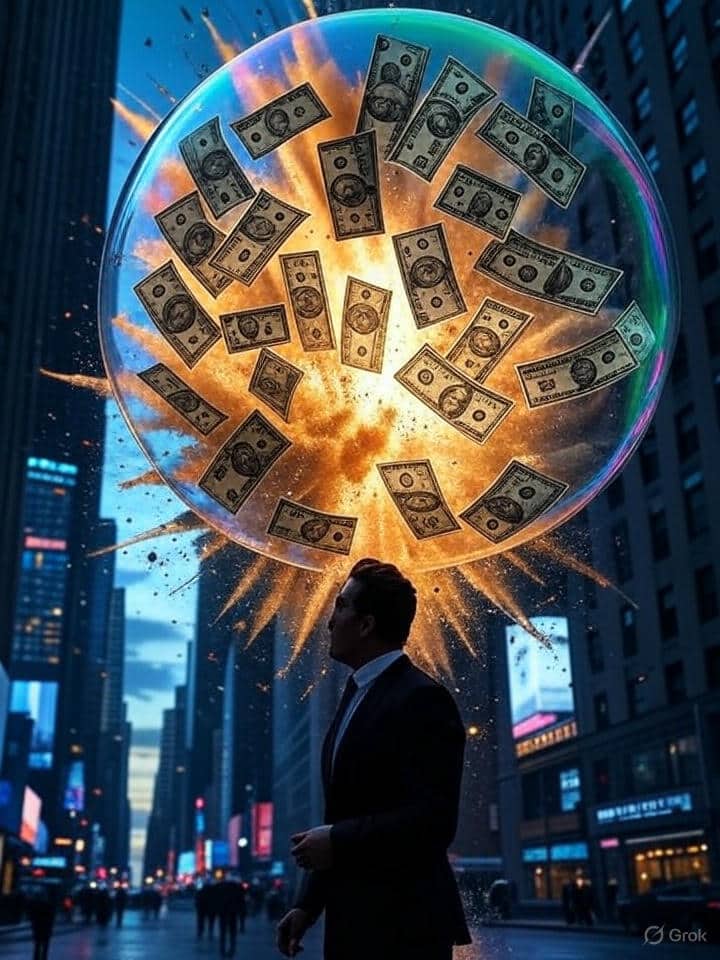The “Dot-Com Bubble”: A Mislabeled Sobriquet or Malfeasance?
The term “internet bubble,” aka the “dot-com bubble,” now twenty-five years after the proposed period in time, appears to me as a mislabeled deception. How does the term “dot-com bubble” continue to circulate despite the realization of its impact on technology stock prices between then and now?
Look at these facts for three major technology companies purported to be part of this bubble. We will look at the year 2000 time frame, price and compare it to today’s price. Keep in mind that these values are inherently stock split adjusted, and the numbers for legacy and current stock prices per share are as follows:
Apple “Dot-Com” Low, 12/1/2000 = $0.24
Apple compare now 10/30/2025 = $277
Microsoft “Dot-Com” Low, 12/21/2000 = $20.16
Microsoft compare now 7/31/2025 = $555
Amazon “Dot-Com” Low, 9/27/2000 = $0.28
Amazon compare now 9/7/2025 = $258
Now for the math of dividing today’s stock price per share by the price of 25 years ago during the purported bubble time period:
Apple 2025 High $277 ÷ Apple 2000 Low $.24 = 1,154 TIMES return on investment (ROI) in 25 years
Microsoft 2025 High: $555 ÷ Microsoft 2000 Low $20.16 = 27X ROI in 25 years
Amazon 2025 High $258 ÷ Amazon 2000 Low $0.28 = 921X ROI in 25 years
Here’s a redux for every $1 million you bought:
- If you purchased $1 million of Apple stock you now have $1,154,000,000.
- If you purchased $1 million of Microsoft stock you now have $27,000,000.
- If you purchased $1 million of Amazon stock you now have $921,000,000.
- in aggregate, for a $3M investment that is $2,102M for an average of 700X rate of return in just 25 years
Was there really a bubble?
How many shares of Amazon, Apple, and Microsoft would you have bought in 1995–2000 if you knew they would be at their current values today in 2025? And you would be realizing 1,154X, 27X, and 921X your return on investment?
Well, that is exactly what everyone who was investing in technology stocks was doing at that time. It was obvious to some of us that technology stocks were, at minimum, reasonably priced for the time and had magnificent imminent growth potential due to the solutions and market opportunities they were representing and pursuing.
Services that were solving previously unsatisfied global issues of human communication and commerce would dominate financial valuations in the future, without question or discovery. Looking back, the “dot-com bubble” time period was the most undervalued opportunity to invest in modern financial history.
Under the false label of a “dot-com bubble,” Digital Island shareholders experienced a catastrophic market devaluation and stock sell-off. Digital Island was not associated with or comparable to a “dot-com” company. If you have read this far you are clearly aware that Digital Island was the backbone of the global internet, and had nothing in common with online shopping companies that were without customers nor revenue.
It did not help that during the NASDAQ melt, there was not a 6% fuse in place to stop trading for the remainder of the session, as there is now. Conversely, if the market begins to decline and reaches a 6% overall devaluation during any trading period, it remains closed to cooling off. That was not the case then, and a computer-generated sell-off took the market into a death spiral. Although we have remedied this issue and will not repeat it in the same manner, those who preceded the new policy suffered irreversible damage.
If you have studied economics and know who Alan Greenspan was during this time (Federal Reserve Bank Chairman), and you have read his testimony to Congress about his concern about too much wealth generation for the country during the late ’90s, then you will understand why he raised the federal funds rate to kill the economy’s momentum. In Greenspan’s opinion, there was too much new wealth creation for the general public, which would pressure businesses to raise personal and household median incomes in order to retain employees.
Note that at this time in 1999, inflation was 2.2%, which is the target goal of the Fed. Thus, Greenspan’s position was simply based on theory, but in reality, it was totally invalid. During 1998–1999, Greenspan raised the federal funds rate to 7.0%. Greenspan’s .5% rate increase in March 2000 was the event that started the collapse of the securities markets, and internet-centric stocks suffered the worst.
In 1999, the inflation rate was precisely within the target range of federal policy, and the GDP was growing at a rapid pace. However, this growth in GDP also meant a rise in income for the working class. Greenspan set out to stop this, and he succeeded in doing so.
Look at the diagram below to see what happened to the fund rate after 2000. That was an attempt by his successor, Ben Bernanke, to fix Greenspan’s debacle he implemented a 5.84% point drop in 1 year Federal Funds Rate yield during 2001; this was unprecedented behavior in Federal Reserve Bank history.

Clearly, Greenspan’s crushing of the stock market with federal policy and the subsequent devaluation of companies worldwide destroyed so much momentum and capital that it took not just the US economy but also the global economy twenty years to recover. In just 50 years, from 1955 to 2005, the Fed moved the funds rate up and down over 150 percentage points in fluctuation. That’s an average of 3% of alterations per year.
With this kind of hypertonic (spastic) monetary policy, how is it possible to build anything lasting? Sound economic policy should translate to adjusting the Fed rate only when necessary, no more than 1% in any rolling 12-month period.
The 5.84% reduction in the Fed rate in just 12 months from 2000–2001 proves that Greenspan was culpable for the total destruction of the economy. Investors are not buying stocks now worth 25–826 times their January 1, 2000, prices.
After he destroyed the economy and lowered the standard of living for hundreds of millions of families around the world, history was not kind to Greenspan. Chairman Bernanke replaced Greenspan, embarking on an eight-year term to lower the Federal Funds rate he inherited from Greenspan from 7% to 0.5%, aiming to stimulate economic growth after the recession.
Though Bernanke tried to resuscitate the economy, it was too late. The industry and the global economy had already suffered the death blow of the devaluation of worldwide capital and global job creation. After the dereliction of responsibility by Greensan, it took 20 years to bring technology and the global economy back to life.
To paraphrase, the Federal Reserve’s leadership and our government officials, acting as our “home team,” inflicted the stock market crash on us, akin to the military’s concept of “death by friendly fire,” but it was actually intentional.
In summary, government overreach killed the technology momentum of the 1990s, not the over-exuberance of investment in the services that ultimately shaped the new foundations of human communication and commerce.
It is impossible for me to close without trying to convey what we were doing with our investment in internet infrastructure and emergent services. Knowing what transpired more than two decades after the 2000 financial crisis, it is evident that the market did not overprice in 1995–2000 due to over-exuberance, and the terms “dot-com bubble” and “internet bubble” are inaccurate descriptors.
In the case of each reader individually, if reading the above was before “your time” or you did not “get it” because you are not educated in the sciences of economics, maybe now, and hopefully, you can understand why people, like myself, were investing their capital in technology companies at those 1995–2000 prices.
If you haven’t already, I hope you now possess a sense of compassion and empathy for those who have lost their life’s work, savings, investments, opportunities, and future opportunities. This was all due to government policies aimed at reducing the quality of life for everyday working people, who invested their money to support the people and services involved in the globalization of the internet.
